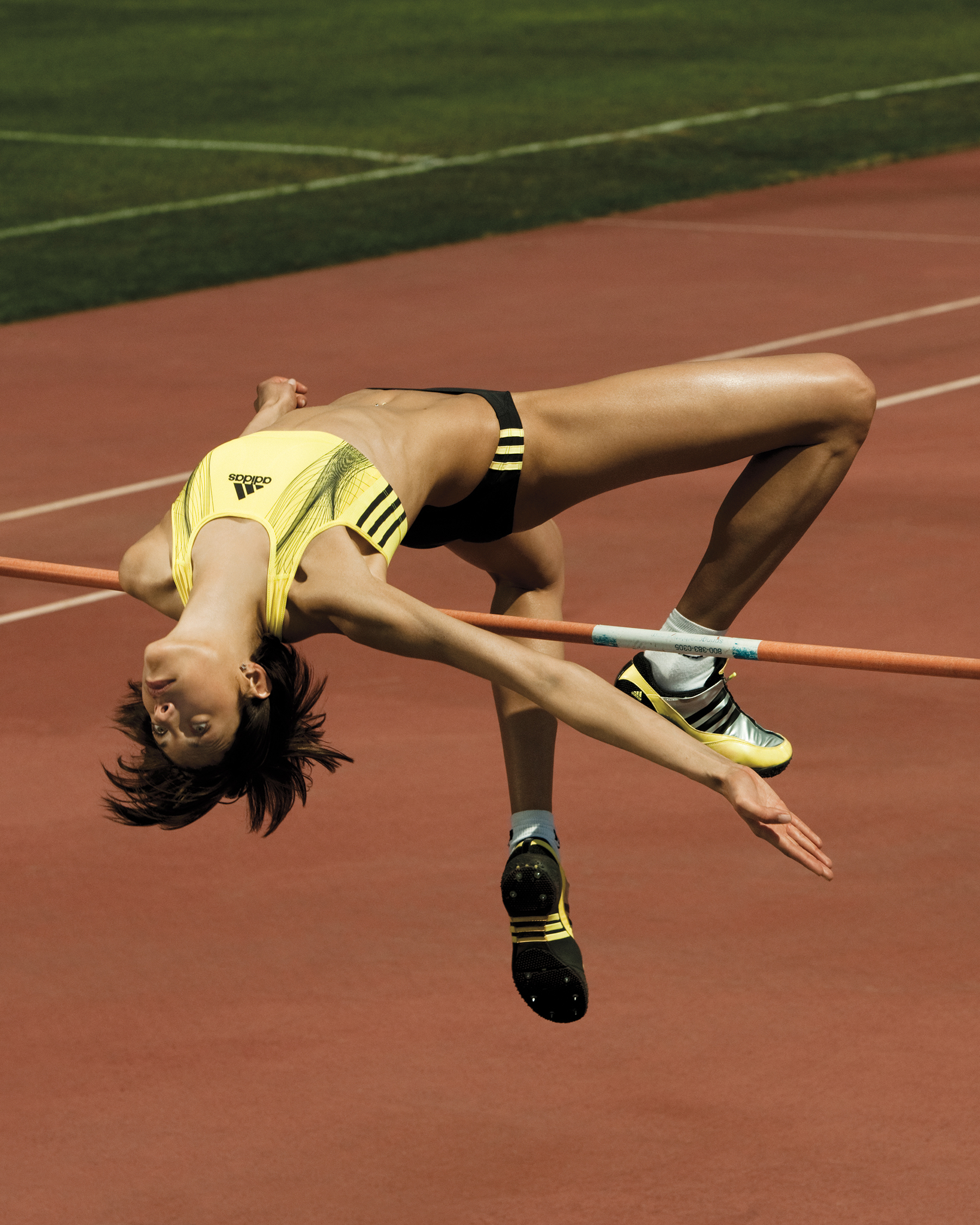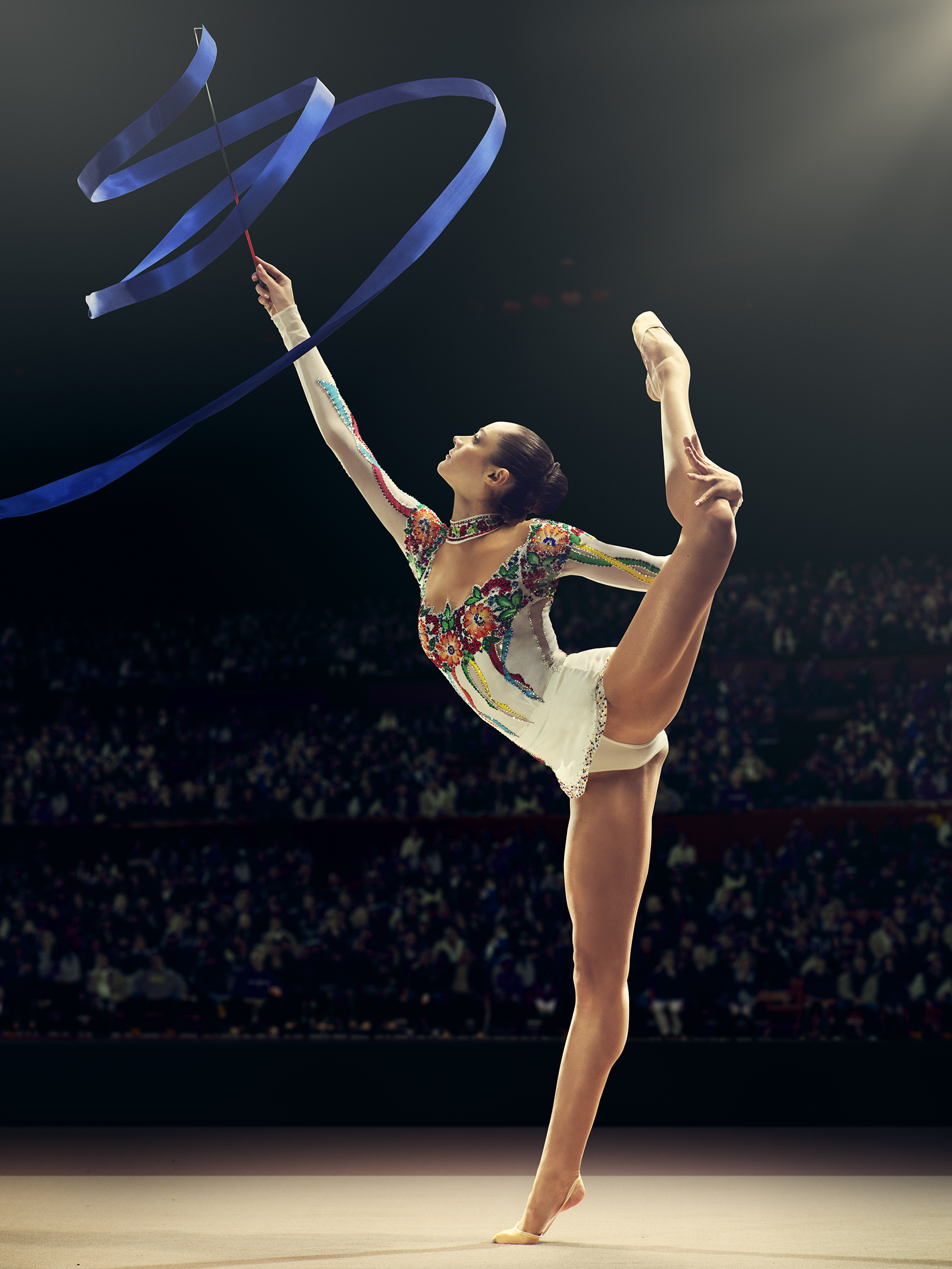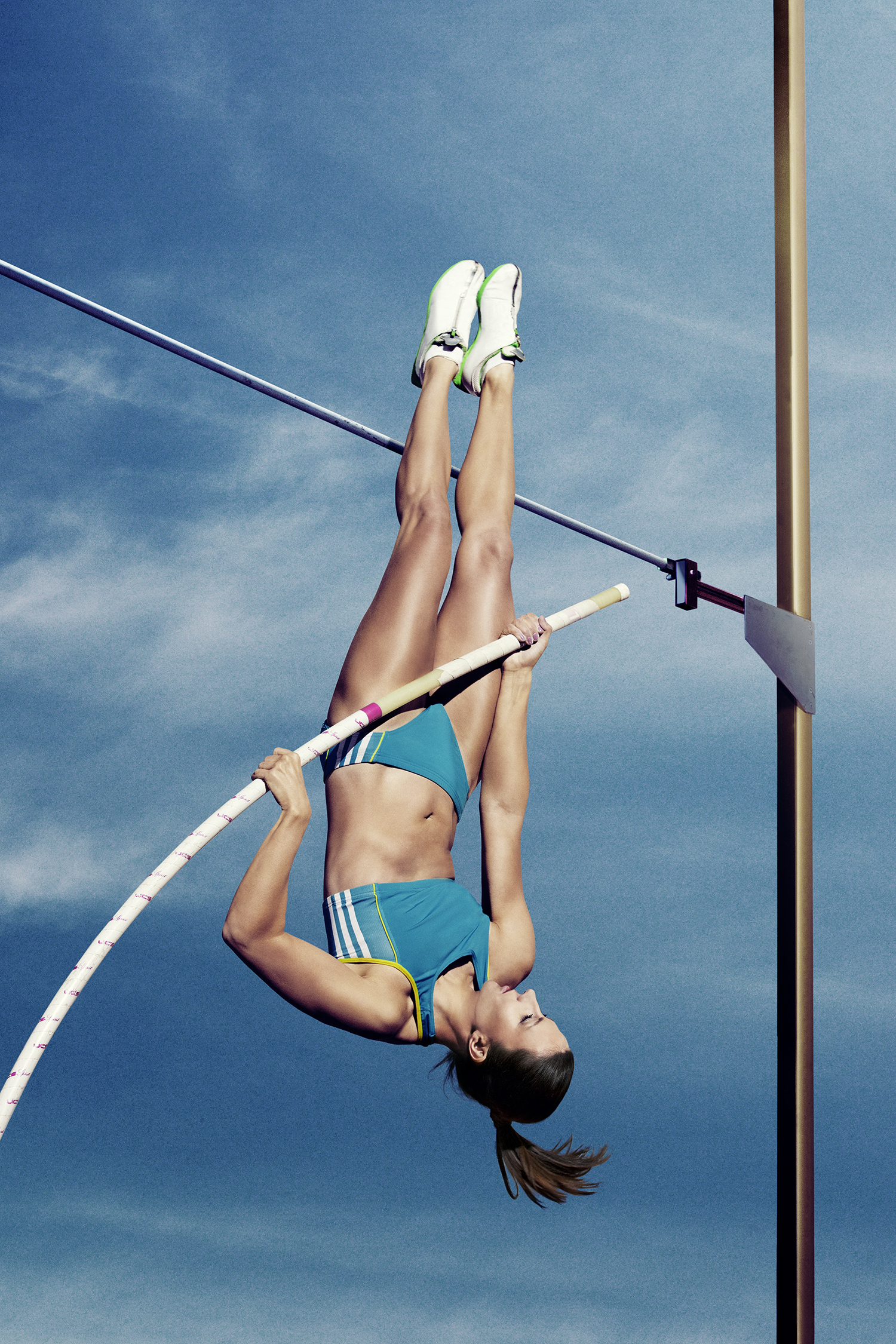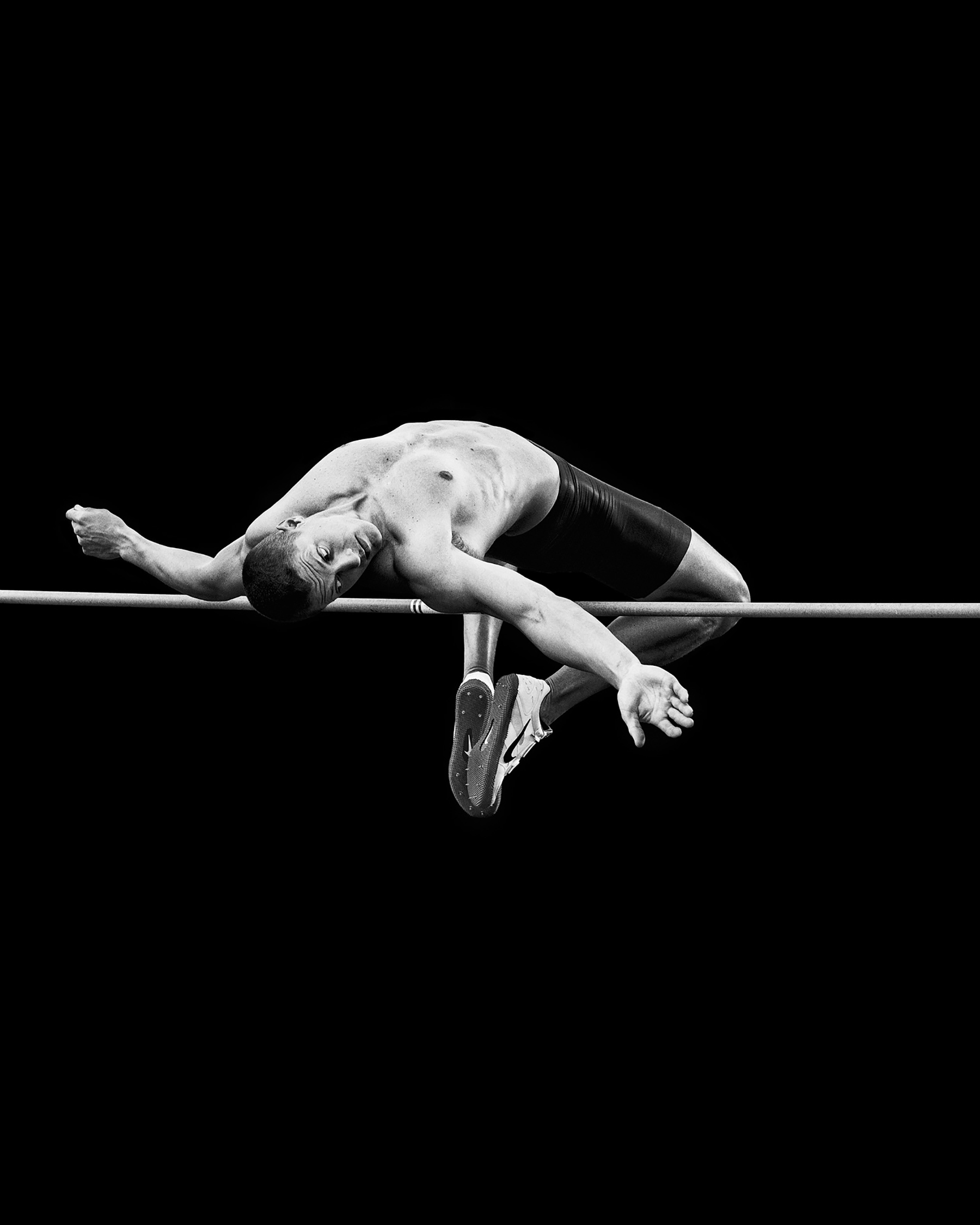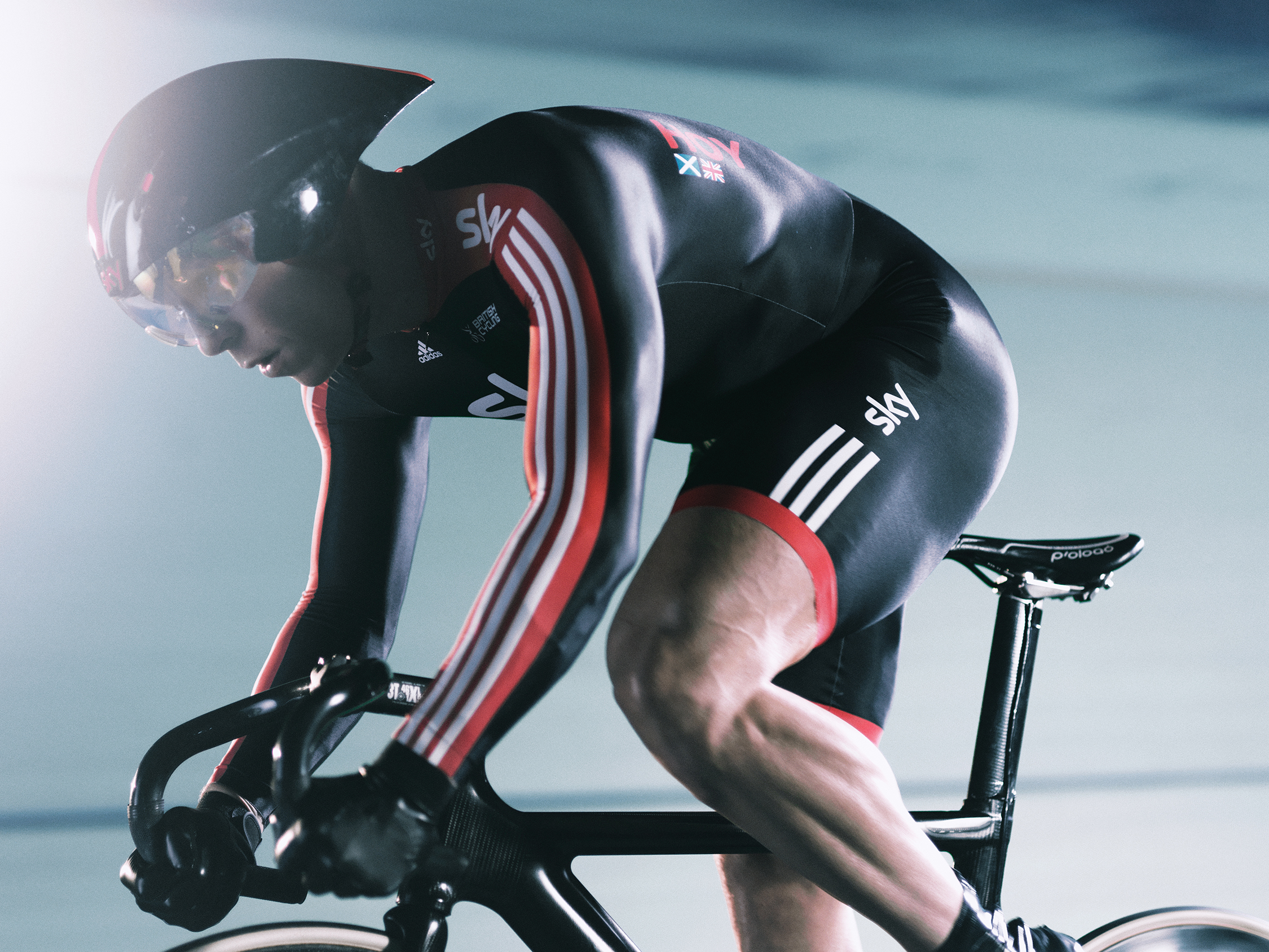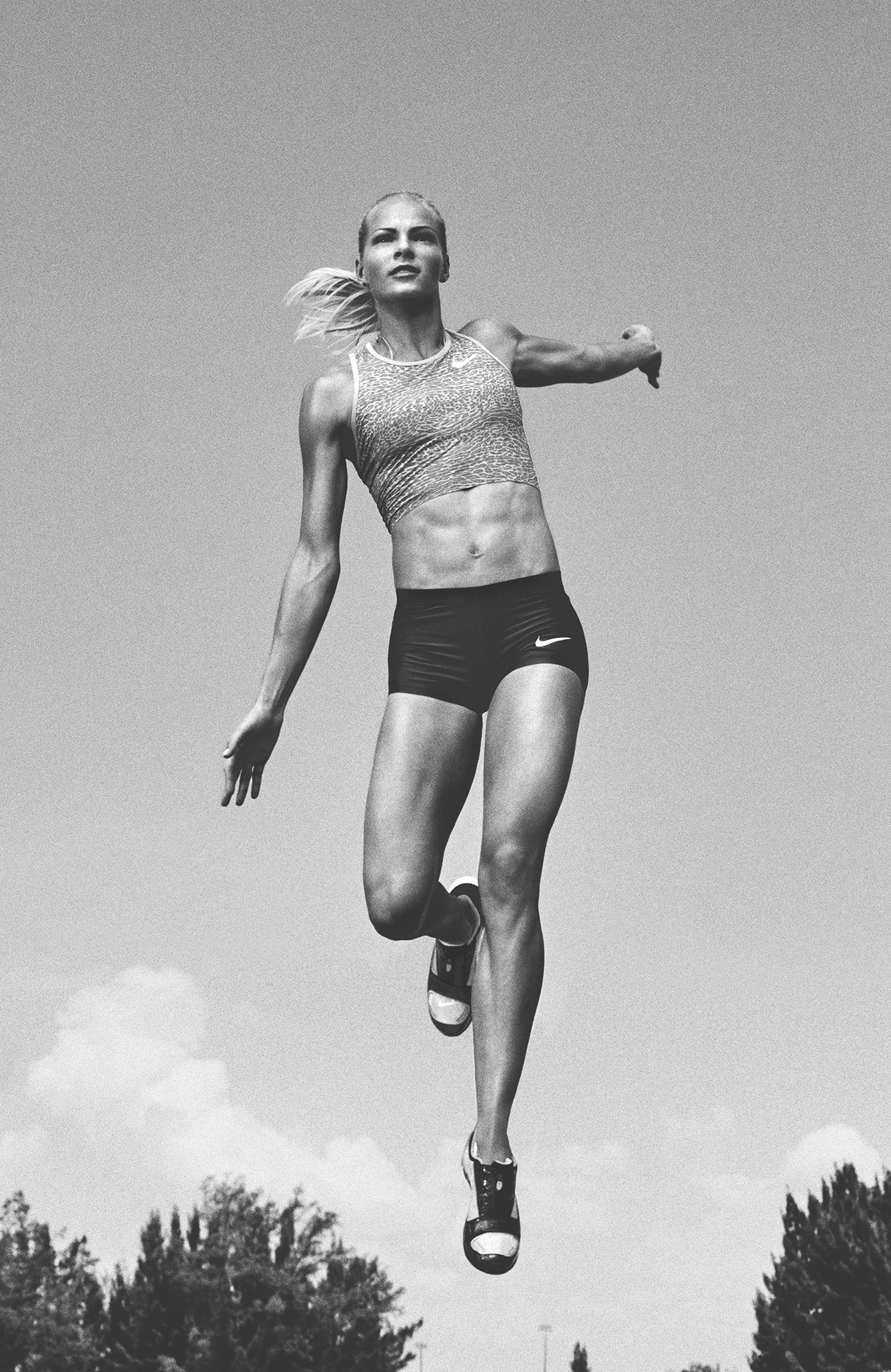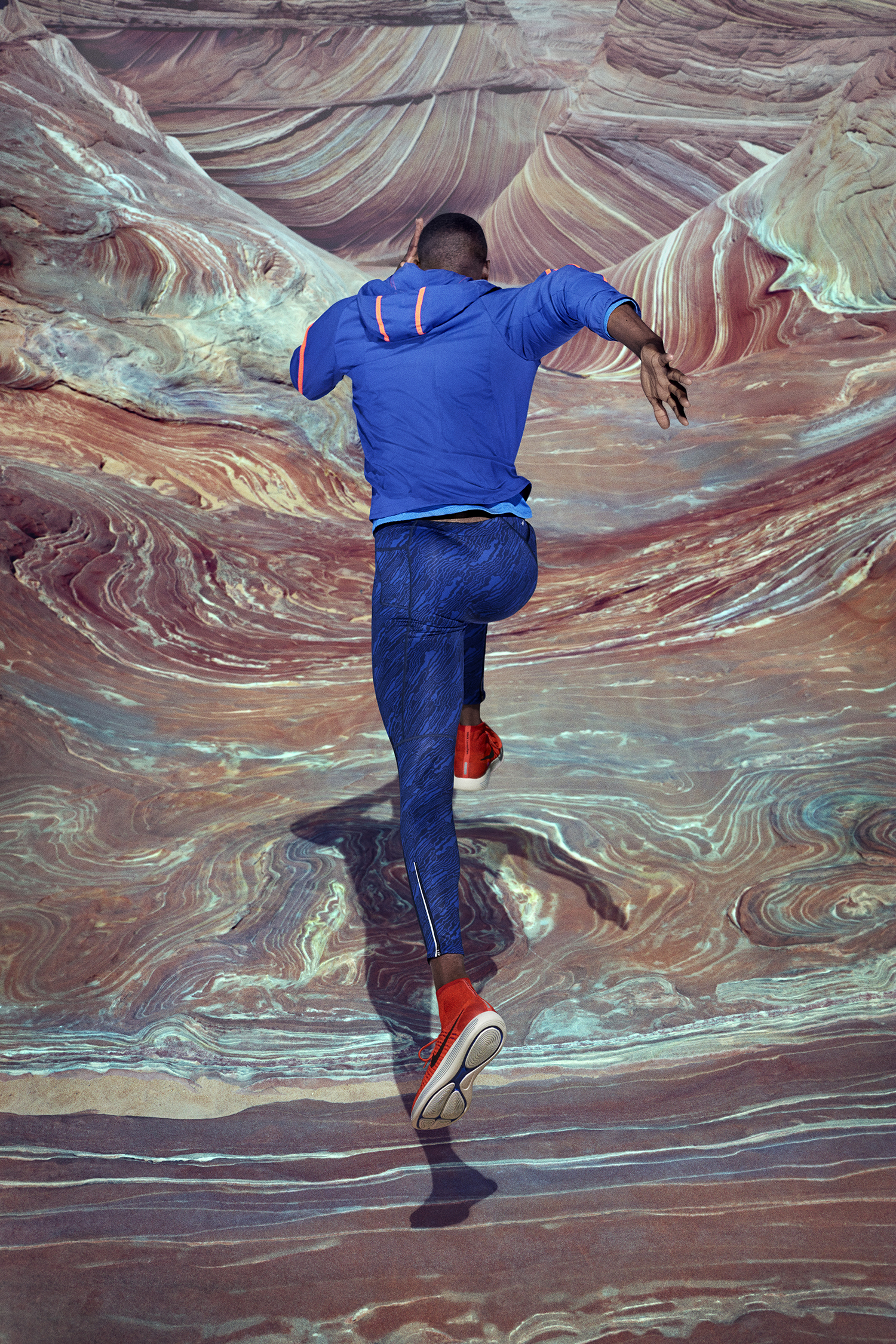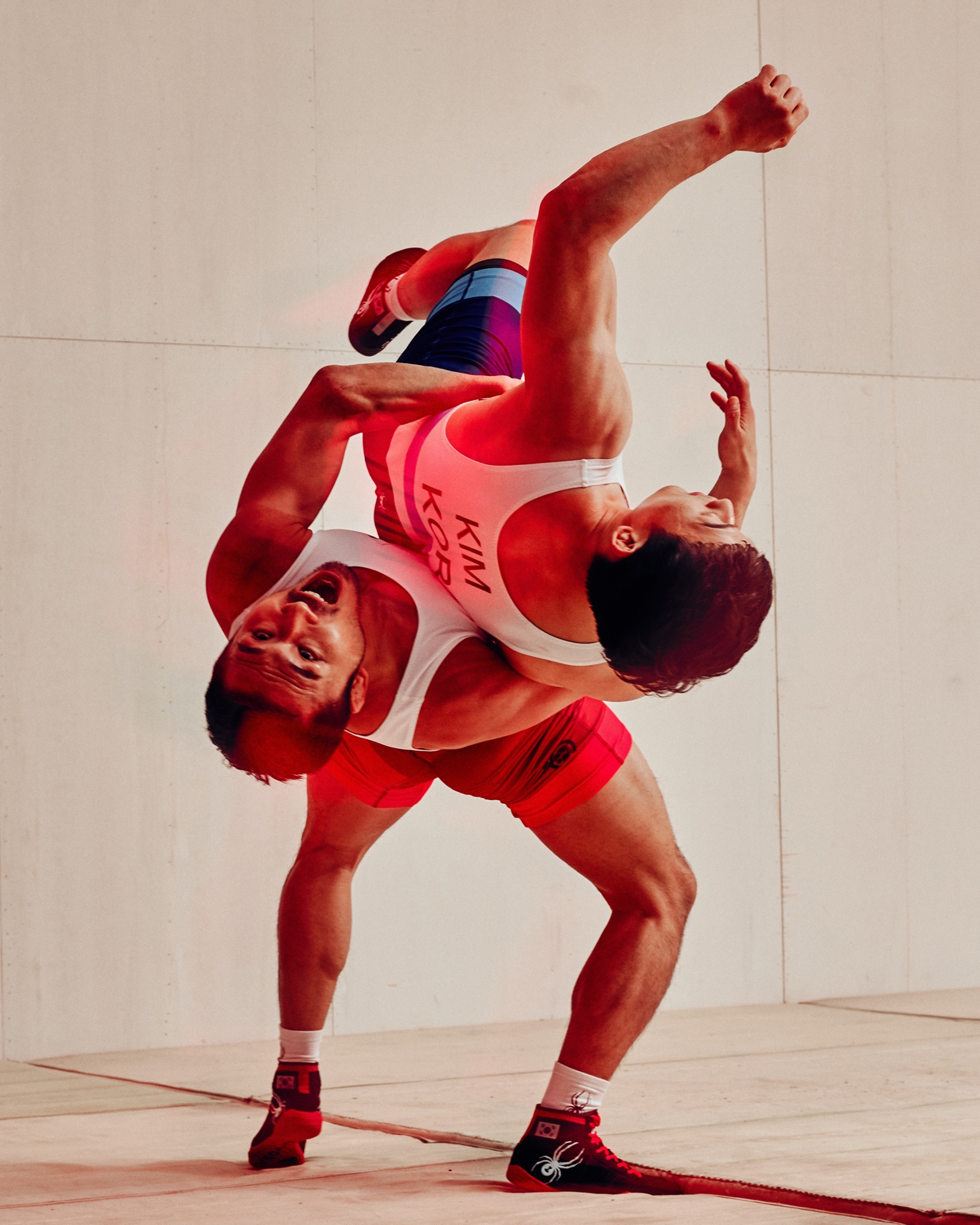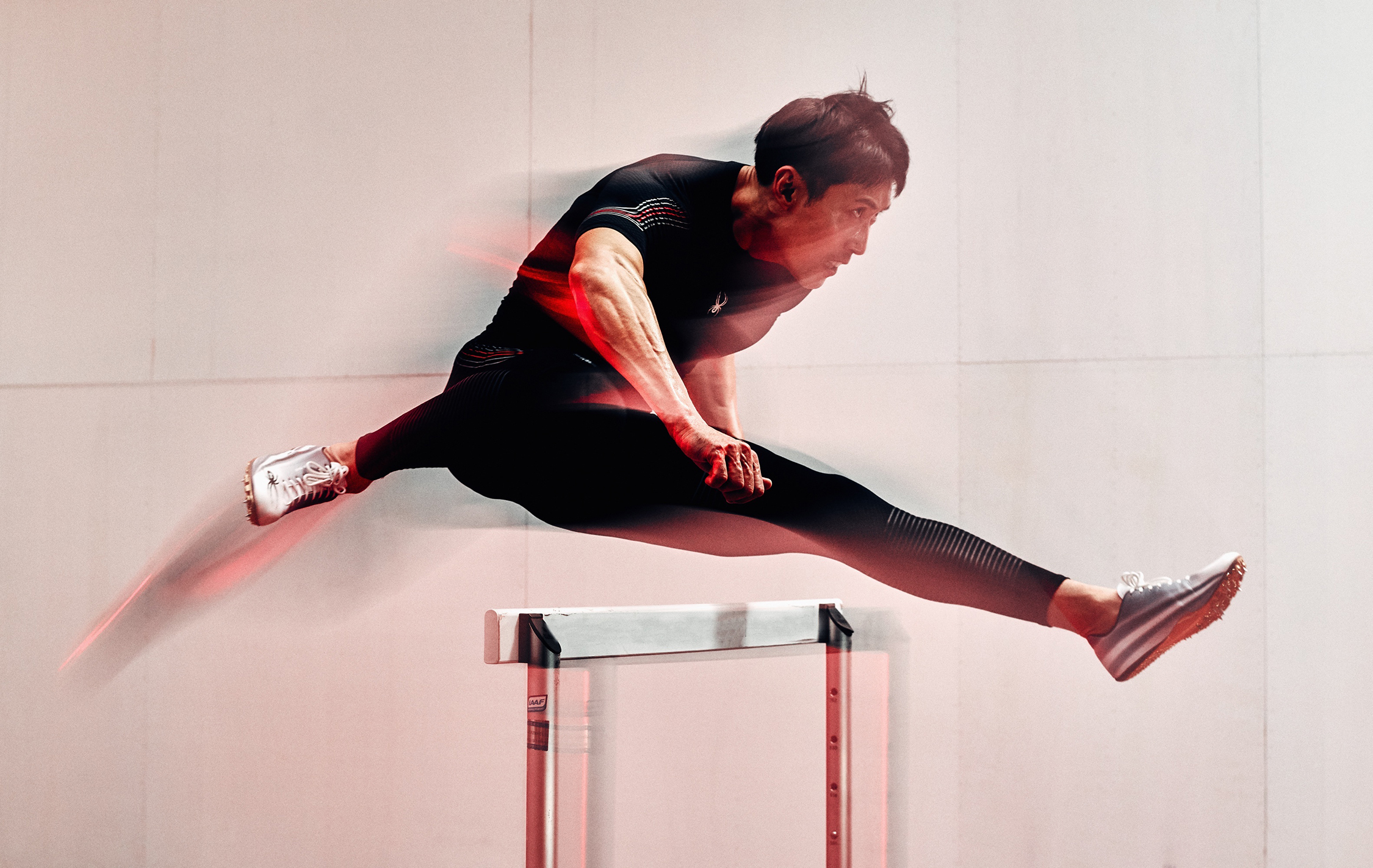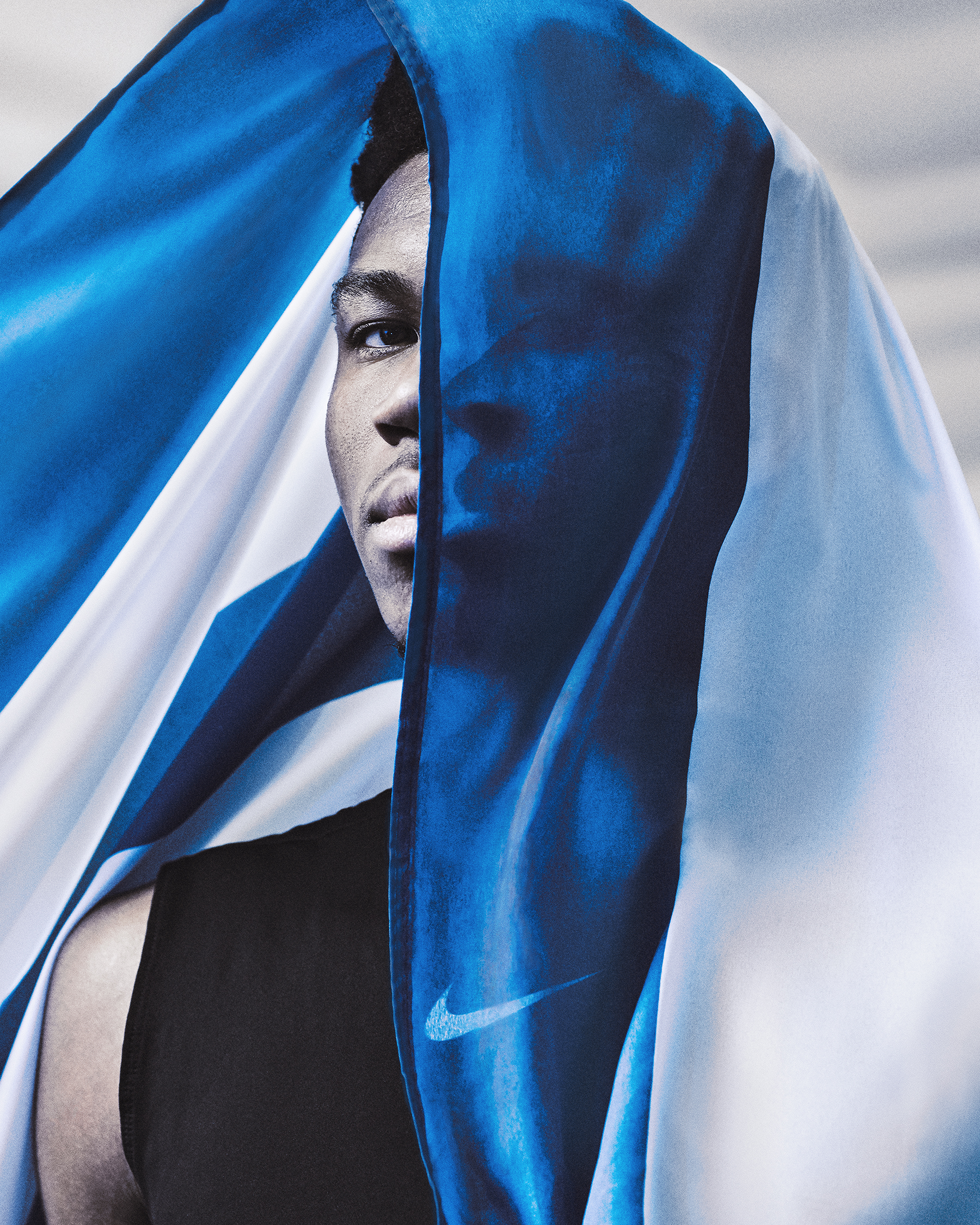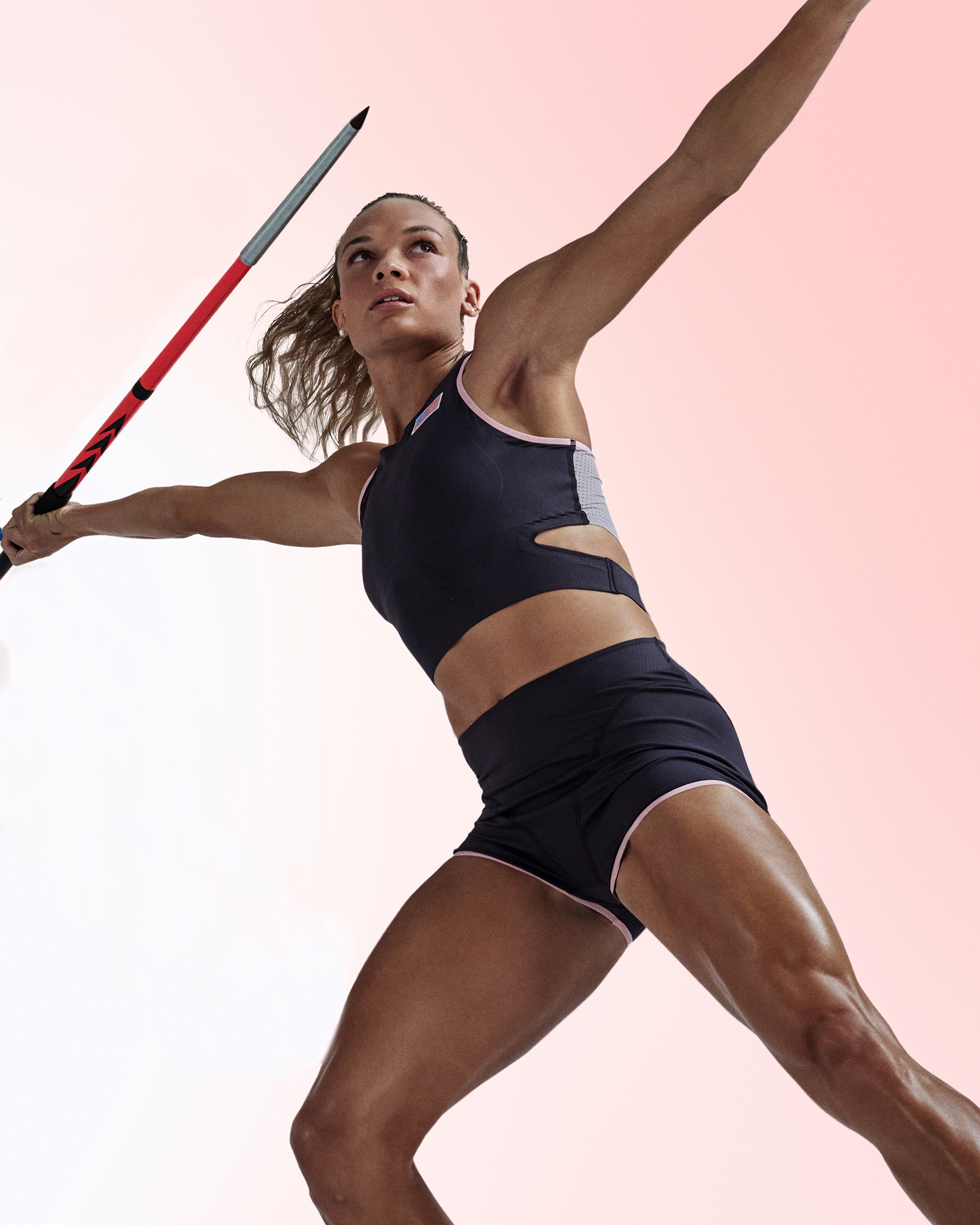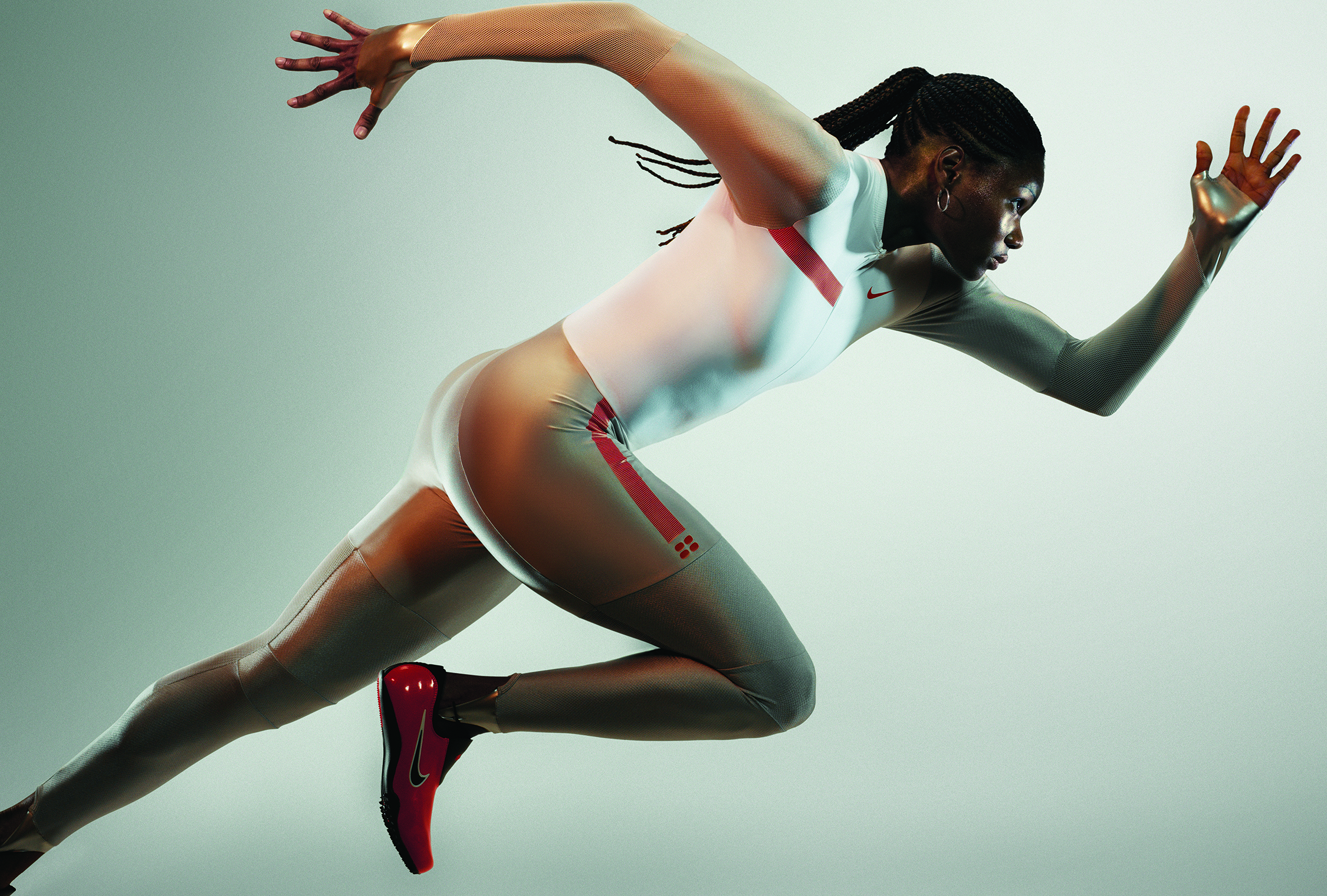
 NIKE SPEED PORTRAITS – 2004
NIKE SPEED PORTRAITS – 2004
Carlos Serrao
Heidi: You shot Super 8 movies and animations in 5th grade – that’s ambitious for a kid!
Carlos: Like many from my generation, the 1970’s and 1980’s’s sci-fi movies like the original Star Wars or Close Encounters were the catalyst into the visual arts. It was the first time seeing all the behind the scenes TV specials and making of stills in magazines like Starlog and Fangoria that showed us kids how these filmmakers problem solved and came up with creative solutions. My early super-8mm films were mostly claymation with sci-fi themes, as well as creating short animated films on subjects like “The Amoeba” for school science fair projects. Everything was shot in sequence in camera until I as able to get my hands on a reel to reel super8 viewer, where I was able to tape spliced scenes together. Later on, I was able to get a Sears branded 35mm Ricoh camera and darkroom kit, and taught myself how to process B&W negatives and printing.
Did you also skate?
Yes. I was heavy into the skate scene in South Florida if you could even call it a scene. This was the era when all the skate parks from the 70’s and early 80’s had all shut down, and no one was paying attention to skateboarding. Skating was mostly underground, on vert halfpipes in backyards, and of course street skating.
How did looking at urban geometric space, sequences, and movement in skateboarding impact your photographic style?
Interesting question…. as skaters, we were always sizing things up that could possibly be used to skate on. Miami didn’t have a lot of those above-ground drainage ditches like they do in the western states, and unless a swimming pool was built pre-Second World War, the transitions were too tight to skate. Because of that, we were always on the lookout for what could work, or what we could scrape together to build. It was the quintessential “Skate and Create” vibe. Also, a few of the backyard ramps we would visit were owned by some of the older guys who were already in high school and just entering college age. Those guys were doing really interesting stuff with photocopy punk skate zines, creating art and photography — the real D.I.Y. stuff. Being exposed to that, really inspired me to pick up a camera and try to emulate what was happening in those zines, as well as the great skate photographers from Transworld and Thrasher magazines like J. Grant Brittain and Dave Swift.
Fast forward to a 20-year history of photographing Olympic athletes kicked off by shooting Nike’s 2004 Speed Campaign – looking back on that project can you share a few important creative moments?
At that time, I was starting my career, and I wasn’t shooting a lot of sports. I was mostly focused on portraiture and fashion editorials for more independent magazines like Paper Magazine and a few smaller apparel lookbook shoots for brands. At the same time, Nike was starting to hire some fresh, young art directors, and in their words, were moving away from a lot of “runners in fleece photographed motion blurred running thru the forest” imagery from the 1990’s. They were interested in experimenting and creating photography that would be much more aligned with fashion editorials with more of a controlled studio lighting scenario while merging that look and feel with sport. The perception at that time was that “fashion photographers” would shy away from anything that wasn’t deemed “high-end apparel”, and that those sportswear brands were strictly for sports-focused photographers. That impression seemed to shift after the global recession around 2008-2009, when we suddenly started seeing those deemed as higher profile fashion photographers expanding their genre and work for these types of brands. Nowadays, with mutual branding, it’s extremely commonplace.
For the Nike 2004 global Olympic campaign, Heather Amuny-Dey, a young art director at Nike, approached me to collaborate with her on this project. She had seen some of the lighting from a fashion studio shoot I did and thought the look would be a good fit for the creative direction of the campaign.
Six months before we started the Nike Speed campaign, we did a preliminary shoot with a few athletes in the summer of 2003. This allowed us to experiment with the lighting and create a proof of concept for her clients. This portion of the project was shot on film. One thing that I quickly realized, was that these elite athletes only have a finite amount of energy they can expend per day during their rigorous training schedules, not to mention the concern of injury. Because of this, we might only get one, or two takes to capture whatever respective sport action. This limitation helped hone my timing in looking for the athlete’s body’s “tell”, that would happen a faction of a second before the peak of action. We also had to work little hacks with the strobe lighting packs and transmitters available at that time, to achieve the highest flash duration to freeze the action. Because it was shot on film, and also while traveling to different countries, there was a little bit of frustration in waiting a few days to get the film back from a lab before knowing if we had gotten the shot.
The main campaign started ramping up in February 2004, and by that time a few viable digital camera systems had finally hit the market. I had shot with one in the interim on a small fashion brand project, and although I wasn’t fully impressed yet with the color look of the raw files, I thought this would be a perfect tool for the Speed campaign since we could instantly see if we got the shot. The art director had expressed concerns, as she had done a shoot a few months earlier with a different digital system, and the resolution and quality was subpar for their uses. The client requested we do a test shoot with this newer digital system we were proposing. We emailed the test jpegs in real-time during their project meeting in the Portland offices, and after seeing the results, they were sold on this approach. The only stipulation was that we traveled with backup film in case we encountered technical issues. The digital backs at that time were wildly expensive, so we could only afford to lease one to travel with.
Nike had come out with the “speed suit” which was novel in that the apparel is like a second skin that covers the athlete head to toe. We wanted to emphasize the sleek form of the apparel, as well as the musculature of the athletic bodies in action. We explored this by edging the lighting with a hint of a warm, red tone that was focused on the trailing end of the athlete’s body, like a glowing meteor trail. We kept all the action either straight on, or profile to keep the shapes graphic.
We started the shoot in early March of 2004 in a sound stage in Amsterdam. We then continued throughout the US to the various cities that the athletes were training in, then wrapped it up in Paris and London. It was encouraging to hear that all the creative teams back in the Nike global offices were excited and giving great feedback from the sample of images we were sending from the road.
Shortly after that campaign the book: Beauty of Speed featuring 37 global athletes was published by Nike – what was your biggest takeaway from creating that book?
The book was a surprise, as I had no idea they were going to collate all the athletes we shot into a book. I think it was something that wasn’t on the table until the work came back and everyone was stoked on the results.
How did your sport work transcend into fashion and portrait work?
As mentioned above, it was kind of the opposite, as the fashion work first transcended into these early sports campaigns. The only downside was once that campaign came out, clients and photo editors tended to pigeonhole me, and suddenly I was only being considered for the “athlete kicking ball in studio” shoots. It was lucrative and allowed me the budget to continue to learn more lighting techniques, but it took me a while to come across photo editors who could see past the sport angle and realize that the work could be applied to non-sport portrait or fashion photography.
Your use of color and shadow has a surreal, visceral quality (I’m struggling to define it – the viewer emotionally plugs in and there are no words) – where did that aesthetic stem from?
Thanks! That’s a hard question, as I’m not sure where the aesthetic came from either! It’s probably a bit silly, but I pride myself in knowing how to light and doing things really D.I.Y. Perhaps at times that approach has been detrimental, like not hiring out a DP. For me, researching and experimenting with the lighting is still part of the fun. I can’t wrap my head around some of the stories I hear of high-end photographers that don’t know how to light themselves, or worse those who don’t even push the shutter button, as that’s a whole different world! I think I’m always trying to mix the pragmatic of what lighting will work to achieve high shutter speeds, but also be subtle enough to feel simple and just a little more elevated, yet feel real and organic.
How did your collaboration with Monica May come about?
My partner Monica May is a great photographer, her work feels thoughtful and considered. The first collaboration we did together was in 2008, for an Esquire fashion story. The magazine wasn’t asking for a motion asset, but it was a nice editorial with male models in suits on a dry lake bed, the type of fashion story that pretty much shoots itself! Monica shot super 8mm, and since it was natural light, she was able to get the look cohesively with the stills. We got the film processed, scanned it, and fumbled a bit learning the editing software. We turned the final edited film to the magazine along with the stills, in case they wanted showcase the film on their website. It was extremely well received, and Esquire began to ask for these companion film pieces for our commissioned fashion shoots. Being editorial, the budgets could only allow little to no compensation for this additional asset, so they were mostly a labor of love. We used these types of shoots to learn and experiment with different processes. Eventually, we started bringing in higher quality motion cameras onto some brand ad campaign shoots (again on our own dime), and continued to hone these skills. We would do all of our own editing, not only for cost, but for the learning process as well. Editing can still be an exciting component for us because it’s like working on a complex puzzle.
Around this time, we were also getting ad jobs where on set timings would be shared with a TVC campaign. For whatever reason, the crews on the TVC motion teams were always a bit hostile and flexing some weird competitiveness with the stills team, even though we were all working for the same clients. We weren’t even taking on projects that required us to use their same set, but even with being completely autonomous, there were unnecessary complications thrown at us. We started thinking it might benefit these types of projects, especially in these pro athletes’ shoots, to school ourselves in continuous lighting that would allow us to capture both stills and motion simultaneously. The client began to see the potential and the benefit of hiring us as a team to capture both.
Tell us how you two harmonize creatively through the process.
We’re both technical, but as mentioned, she’s probably the more thoughtful one in her approach. I might be quicker to jump in and try to problem-solve along the way. Monica works with the motion cameras and her team, while I mostly handle the lighting and still photo aspects so it’s seamless between the stills and motion. Sometimes we cross over. Both of us tend to be highly involved with the production process, as we tend to get a lot of the more complicated timings and multiple asset request projects. We both work the logistics as well. While on set, we are either able to capture certain scenes at the same time due to the consideration of the lighting, or able to bounce the subject’s attention back and forth between my lens and hers. We both love to edit when the project allows, and we have developed a nice workflow where Monica usually takes the first pass and creates a “trim bin” of her favorite takes, then I take that and begin to assemble an edit, then we bounce it back and forth during this process. We also found we love working with music composers and sound design collaborators, since sound can evolve and reinterpret things for these short form projects.
Is The 20 Years of Olympic Imagery a good example project.
I don’t consider the 20 years of Olympic imagery as a project per se. It actually came about spontaneously over the first weekend of the 2024 Paris Olympics. I’m not a huge fan of social media, or the focus on “self branding”, but for better or worse, it’s obviously just another tool to showcase work. I’ve been reluctant to share older imagery, or ones that are heavily sport specific, with concern that the style of imagery might feel dated, or again get pigeon holed with the perception that I only shoot sports. I think the catalyst to share this work was seeing some recent Olympic campaigns with a similar aesthetic to the 2004 Nike Speed campaign, and realizing that the style within photography had once again come full circle, as trends tend to do.
I quickly edited the one minute collage film on the first Sunday of these Olympics, while watching the start of gymnastics and swim competitions, and posted it on the first Monday of the games. I didn’t have a plan going into it, so every night while watching the competitions, I would collate and resize imagery for the next days post. By not calling out brands, or the clients that these images were created for, I instead, wanted the focus to be solely about the athletes and the photography.
Life can be broken out into seasons, how would you describe your current season?
I’ve been fortunate enough to have a long career so far. No huge breakouts, and I’ve never considered myself a critic’s darling, just slow and steady. I can look back and see specific projects that were stepping stones, like the aforementioned 2004 Speed campaign, and those that were fulfilling and allowed us to discover, or learn something new. With all of that, I still find that I am excited to learn new things, hopeful for what the next project will bring, and confident in the experiences that have come with the years of work. So perhaps it’s a hybrid of all of life’s seasons!
What has changed the most – you, your process, or the Olympic Games, or photography itself?
That would take up another whole interview! I can attest that the landscape has changed so much since I started out, and moved even quicker in the last few years due to the sheer amount of photographers, directors, brands, social media, etc. With regard to the Olympics and photographing professional athletes, many of the changes I see are with the athletes themselves. Most of these young athletes have grown up with social media and self-branding. That can be an asset, as many understand all the publicity and brand asks of being a sponsored athlete. However, there are times I’ve seen all the self-branding and the focus of social media become a hinderance. There are also a lot more agents and PR representatives now then there used to be, and while it is necessary to have someone looking out for the athlete’s best interest, some come on set already with that “power flex”. They tend to forget that everyone is there to execute great imagery, while also creating a safe environment for the athlete. There are also a lot more brands besides athletic wear companies that sponsor the Olympics, like credit card companies, insurance companies, etc, that normally don’t shoot athletes, which limits access and timing further.
What are you excited about moving forward?
I think moving forward Monica and I want to continue doing these types of projects, but we are also looking to hone the work to showcase some more simplified and graphic work, as sometimes less is more, in the hopes that not every shoot needs to be a huge science project!

